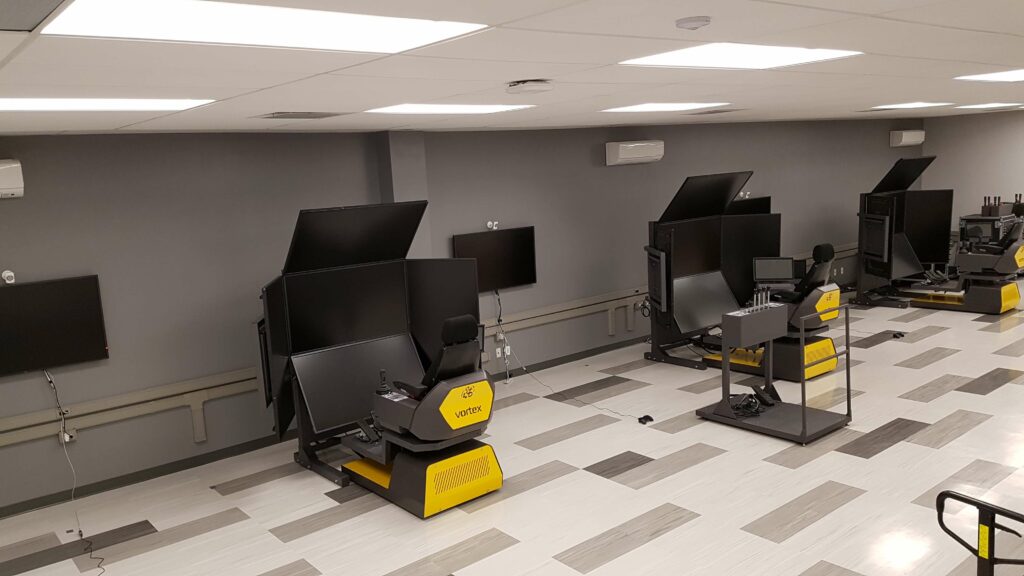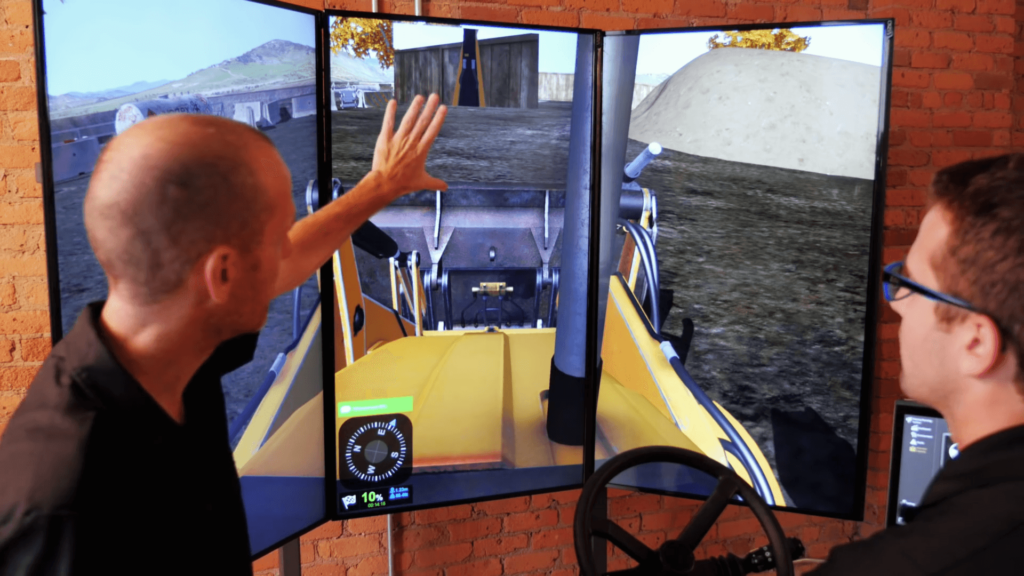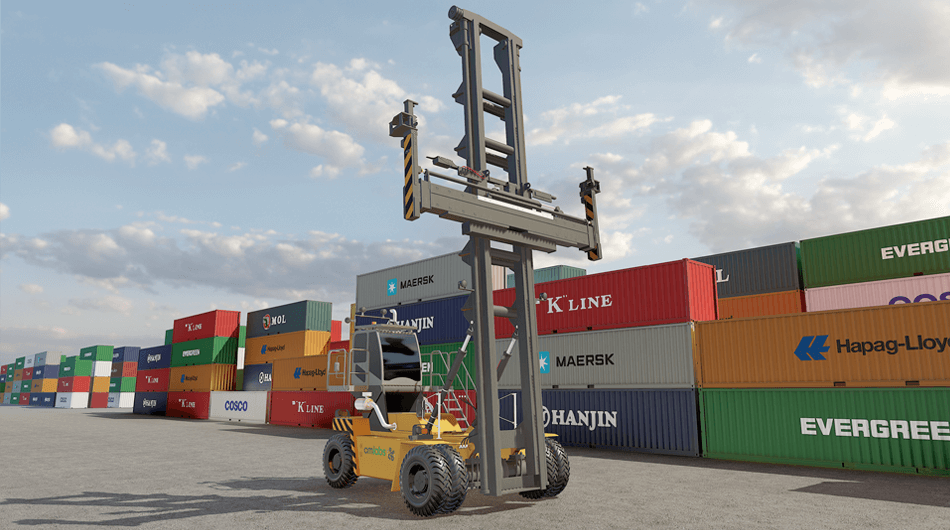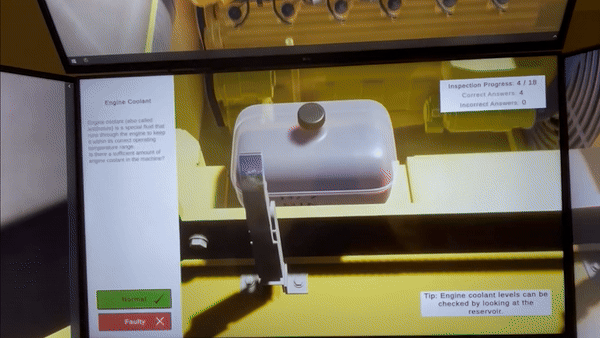February is CTE Month®, a time when we celebrate the importance of career and technical education (CTE).
Across America, CTE programs are teaching students the skills they need through mentorships, field trips, work-based learning initiatives, and other hands-on opportunities—all in the name of addressing a projected deficit of 6.5 million skilled workers.
It’s hard to understate the importance of CTE. According to the Association for Career and Technical Education (ACTE):
- 92% of high school students are engaged in CTE
- 69% of college and adult students are engaged in CTE
Of course, that’s not to say CTE programs don’t face significant challenges. Fortunately, simulation can provide some innovative answers to these problems.
This blog will cover:
The Challenges of Integrating Work-Based Learning into Construction CTE
Implementing a high-quality CTE program means meeting many stringent requirements, including providing students with accessible, safe, and relevant work-based learning opportunities. In fact, the Education Commission of the States notes that “Twenty-three states and the District of Columbia include work-based learning as a factor when approving new or existing CTE programs.”

By definition, work-based learning involves teaching students in a real work environment—just like the one they’ll encounter in their future careers. But as many CTE program managers know, there are many challenges to successfully accomplishing this goal.
According to the Education Commission of the United States:
- Employers worry about the liability issues of having young workers on the job site.
- Employers feel deterred by the time and energy needed to craft meaningful work-based learning experiences.
- Schools in rural and economically distressed areas might not have access to the variety of employers needed to give their students a full range of educational opportunities.
- Students may have difficulty traveling to employers due to lack of public transportation.
- Relationship building with local employers can be difficult and time-consuming for teachers at underfunded schools, whose time may be more urgently needed in other capacities.
- The costs associated with training on real equipment (rental costs, gas, and maintenance repairs) can be significant.
These challenges, alongside other needs such as the ability to objectively assess student progress, make it difficult to integrate quality work-based learning opportunities that are equitable and accessible to all students.
The Benefits of Using Simulation for Work-Based Learning
Simulation training offers a practical solution to many of the challenges involved in providing work-based learning opportunities. But what makes simulation so appealing?
By incorporating a simulation training solution, educators can address many key challenges involved in providing work-based learning:
- Educators don’t have to worry about the liability issues of having students working with heavy equipment.
- Educators can reduce the amount of time required to set up and clean up after lessons, as simulators are much easier to run than real machines.
- Educators can reduce the logistical challenges involved in providing variety to students, as they can use one simulator to train students on up to 16 different equipment types.
- Students can be empowered to study on their own time by logging in and following predetermined learning paths.
- Educators at underfunded schools aren’t placed at a disadvantage if they are unable to devote hours of their time to building connections with local employers.
- Simulation training provides a full continuum of work-based learning that progresses in intensity—from basic to advanced exercises.
- Students without access to transport to get to worksites aren’t placed at a disadvantage, as they can complete simulation training at school.
All of these benefits add up to make simulation an especially effective training tool.
Other Benefits of Using Simulation in CTE Construction Programs
Simulation also helps educators achieve many other hallmarks of a high-quality CTE program, as outlined in the 2018 ACTE Quality CTE Program of Study Framework:
- Simulation can help local communities address pressing labor challenges by boosting recruitment in construction.
- Simulation can be used for outreach, encouraging students to enroll in construction CTE programs by demonstrating the rewarding nature of careers in construction.
- Simulation acts as a differentiator for schools looking to promote their CTE program as a cutting-edge solution.
- Simulation allows educators to objectively evaluate a student’s performance.
- Simulation helps prepare students to pass examinations and gain necessary credentials.
- Open-ended exercises that don’t just have one solution allow students to develop their critical thinking and problem-solving skills.
- Simulation provides authentic scenarios that help contextualize lessons.
- Schools that opt for acquisition management and support from their simulation training provider receive regular software updates that automatically keep exercises up to date.
- Simulation training accurately reflects occupational practices and requirements—and is even used by construction companies for employee upskilling and cross-skilling.
- Instructors can address the strengths and weaknesses of students, offering targeted practice when needed.

Taken together, these benefits provide a real advantage to schools looking to either add or improve their CTE programs in construction.
Examples of Simulation Training in Action
Training centers all over the world have found success using simulation to boost recruitment, ease the transition into careers in construction, and prepare students for the challenges of a real work environment.

Using Simulation to Promote Careers in Construction
In Ireland, training centers have seen success using simulation to attract and appeal to the next generation of students. At the National Construction Training Centre in Mount Lucas, for example, recruiters found it effective in recruitment efforts. “Awareness is our biggest challenge,” says John Kelly, Manager of The National Construction Training Centre in Mount Lucas. “You need something new and exciting that grabs people’s attention. Once you do that, you can have a conversation about what you do and what the career opportunities are.”
Case Study
Ireland’s National Construction Training Centre invests in CM Labs Simulation Training to attract New Talent Pool
Closer to home at CICB’s Houston Training Center, Operations Manager John O’Connor notes that students always ask about the simulators they see on campus tours.
Why is simulation so useful in recruitment efforts? Because digital solutions appeal to the next generation and help demonstrate the exciting potential of a career in construction.
Encouraging Students Who Feel Intimidated by Construction Training
One especially useful aspect of simulation is its ability to ease the transition into working with heavy equipment. As John Kelly observes, “There is a new pool out there that doesn’t come from a construction or agriculture background.” He adds that without that background, “If you ask a 17- or 18-year-old to jump on a real machine and drive it, they’ll be terrified. But with a simulator, they know they can’t do any damage or make a show of themselves. Simulators are creating a new pathway to construction.” This makes simulation an especially useful tool when training students from historically underrepresented backgrounds.
For the Southern Alberta Institute of Technology (SAIT) Polytechnic, simulation helps engage students who have had negative experiences with classroom education in the past. Jim Szautner, Associate Dean at the Southern Alberta Institute of Technology (SAIT) Polytechnic in Alberta, notes that “their secondary experience might not have been super positive, so they might not have a lot of confidence coming into the postsecondary environment.” However, Szautner observes, “Once they get on the Vortex Simulator and gain the confidence that they can do it, it’s actually quite amazing to watch—they surprise themselves and do far better than what they thought they were capable of.”

Safely Preparing Students for Real Work Conditions
As one of the oldest and largest crane inspection and training companies in the United States, CICB works hard to stay at the forefront of the industry. It uses simulation to transition students from theory to practice, familiarizing students with basic controls and important safety lessons before they even step into a cab. One aspect of simulation that CICB finds especially useful is its ability to accurately represent real work scenarios.
How does simulation do this? By allowing educators to generate unexpected faults and change weather parameters. Given Houston’s windy conditions, this feature is especially useful when preparing students to work in the city they call home. Students can adjust to unexpected circumstances in a safe environment, making the transition to real equipment a much safer experience.
Simulation Provides an Efficient and Cost-Effective Solution
For Del Mar College’s Division of Workforce and Economic Development, voted one of the “Best Community Colleges for Workforce Training in Texas,” simulation isn’t just a stand-out safety training tool—it’s also cost-effective. “Our goal is to educate students in the community,” says Dara Betz, Program Manager of Workforce Programs and Corporate Services, adding that, “For the heavy construction industry, it can be expensive and challenging, and there are liabilities.”
Simulation helps to reduce those costs. “If you run the simulator for two hours, that’s roughly the equivalent of running the crane for one full hour, when learning the principles and the way the machine moves,” says Dara Betz.
Adding Simulation to Your CTE Construction Program
Working within budgets can sometimes be a challenge when adding innovative technology to classrooms. Fortunately, there are several ways to do this.
Partnering with Local Industry
Developing a partnership with local industry—such as a private company, association, or local union—can sometimes lead to solutions that benefit all. Employers understand the pressing need to fill positions with qualified operators, and may be interested in initiatives designed to help with this.

Applying for Grants for CTE Programs
Grant funding, whether from local or federal sources, may be able to help in certain circumstances. Schools looking to add simulation training to their CTE construction program can look to the Perkins Grant, for example, to see if they qualify for funding opportunities.
To get started, you can:
- Look up your state’s Department of Education Perkins Grant guidelines and application process
- Contact a staff member of your state’s Department of Education for more information
You can also consult these resources for more information on the Perkins Grant, to see if you qualify:
PERKINS IV – QUICK REFERENCE GUIDE
Getting Started with Discretionary Grant Applications
Discretionary Grants
Advance CTE’s Perkins Planning Supports
Accessing School Funding
Communicating the benefits of simulation to a wider audience, including your school or community leadership, is beneficial. Advocating for the needs of your department or organization, and the ways that simulation training can help you reach your goals as well as drive revenue, can sometimes prioritize the allocation of funds to your department.
Applying for funding and looking for resources to help you demonstrate what simulators can help you achieve? Learn more about the benefits of simulation in our ebook The Benefits of Simulation-Based Training.






